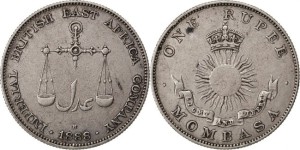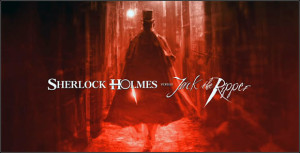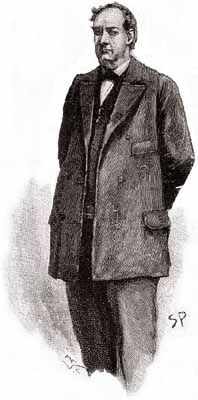A Scion Society of The Baker Street Irregulars

Data! Data! Data! – The Greek Interpreter
“‘Data! Data! Data!‘ he cried impatiently. ‘I can’t make bricks without clay.’”
– The Adventures of the Copper Beeches (COPP)
This column is composed of material (Data!) developed for a short course called Appreciating Sherlock Holmes that I teach twice a year in the Community Education Life Enrichment Program for a local community college. It is composed of “points of information” that are common to many / most / all of the 60 Canonical stories.
The information here has been researched by me or borrowed / stolen from many efforts of other Sherlockians.
HERE GOES This month’s story is ………. The Greek Interpreter
CHRISTOPHER MORLEY SAID . . .
 “Here we meet Sherlock’s older brother, Mycroft Holmes, visit the Diogenes Club, and hear the mystery of Mr. Melas the interpreter, who lived in the same house with Mycroft. Mr. Melas was in great danger, and would have been killed by the ancient device of charcoal fumes, except for Watson’s medical skill.”
“Here we meet Sherlock’s older brother, Mycroft Holmes, visit the Diogenes Club, and hear the mystery of Mr. Melas the interpreter, who lived in the same house with Mycroft. Mr. Melas was in great danger, and would have been killed by the ancient device of charcoal fumes, except for Watson’s medical skill.”
PUBLISHING HISTORY
- This was the 24th of the 60 stories to be published.
- The Strand Magazine, September, 1893
- Harper’s Weekly, September 16, 1893
- Part of The Memoirs of Sherlock Holmes collection, George Newnes, Ltd., London, 1894, Harper Bros., New York, 1894
- The British illustrator was the renowned Sidney Paget. In the United States, W. H. Hyde was the illustrator.
HOW MANY WORDS?
Done before computer programs according to C. E. Lauderback way back in 1960 – – found on SHERLOCKIAN.NET website of Chris Redmond, The Greek Interpreter has 7,058 words, the 14th shortest. The Adventure of the Veiled Lodger was the shortest at 4,499 words. The Naval Treaty tops out the list at 12,701.
THE BEST OF SHERLOCK HOLMES (How do Sherlockians rate this story?)
- In 1927, Arthur Conan Doyle did not put it on his favorite 12 list
- In 1959, the Baker Street Irregulars did not include it in their 10 best
- In 1999, the Baker Street Irregulars ranked it 22nd of 56
- In 1999, the Sherlock Holmes Society of London ranked it 25th of 56
CLASSIFYING THE CASE (From the Wandering Gipsies of Grimpen Mire of Decatur, Alabama)
The Greek Interpreter is one of 23 cases classified as a murder where Holmes solved the case, but one of 5 where the perpetrator escaped justice. The others were The Five Orange Pips, The Musgrave Ritual, The Resident Patient, and The Adventure of Wisteria Lodge.
CHRONOLOGICALLY SPEAKING
Doyle was often very vague about stating WHEN the tale took place and included few contemporary references to help. Whether this was done intentionally or unthinkingly, the dating of events in the Canon is a very popular pastime pursued by several of our “scholars” researching and justifying their results to no end.
Once again we default to William S. Baring-Gould’s dating of Wednesday, September 12, 1888. This means that Holmes is 34 and Watson is 36.
WHAT ELSE HAPPENED IN 1888?
This is the first time to use this category but it is always amazing what is going on at the same year as this month’s story. My actual list is three pages long, so here are just a few examples:

- The British East Africa was founded

- Jack the Ripper’s murder spree in Whitechapel (Where was Holmes?)

- French Indochina was formed
- Brazil abolished slavery
- New York state adopted the electric chair for executions
- Casey at the Bat written
- Dunlop develops the pneumatic tire
- Nichola Tesla made the first AC motor (take that Edison)
- First use of incubators for premature infants
- George Eastman perfects the “Kodak” box camera (selfies begin)
HOLMES AND WATSON – PERSONAL INFO
Nothing new. The guys have been splitting the rent at 221B Baker Street for 7 years (1881 to 1888), and yet, Watson doesn’t know Sherlock has a brother.
DRAMATIS PERSONAE

- Mycroft Holmes – Surprise! Sherlock has an older by 7 years, smarter brother who . . . “Occasionally he is the British government […] the most indispensable man in the country.”
- Heavily built and massive, there was a suggestion of uncouth physical inertia in the figure, but above this unwieldy frame there was perched a head so masterful in its brow, so alert in its steel-grey, deep-set eyes, so firm in its lips, and so subtle in its play of expression, that after the first glance one forgot the gross body and remembered only the dominant mind.
- Mycroft is an extremely popular character in the massive pile of Sherlockian pastiches but appears or is mentioned in only in 4 of the original stories: The Greek Interpreter“, “The Final Problem“, “The Empty House” and “The Bruce-Partington Plans“.
- Meles, the interpreter who brings the case to Mycroft
- Paul Kratides, captive of Lattimer and Kemp.
- Sophy Kratides, his sister.
“QUOTABLE SHERLOCK”
- “My ancestors were country squires, who appear to have lived much the same life as is natural to their class. But, none the less, my turn that way is in my veins, and may have come with my grandmother who was the sister of Vernet, the French artist.”
- “Art in the blood is liable to take the strangest forms.”
- “My dear Watson,” said he, “I cannot agree with those who rank modesty among the virtues. To the logician all things should be seen exactly as they are, and to underestimate one’s self is as much a departure from truth as to exaggerate one’s own powers.”
- “The Diogenes Club is the queerest club in London, and Mycroft one of the queerest men.”
- (Mycroft to Watson) “I hear of Sherlock everywhere since you became his chronicler.”
HOLMES’ FEE
There is no mention of a fee, but he was acting at the behest of his brother who, sometimes, “…is the British government.” There had to be some form of remuneration. Or was it for “Queen and Country?”
SHERLOCK ON THE BIG SCREEN & THE LITTLE SCREEN
The Greek Interpreter has only been on a screen three times with only one still being available to the world.
- 1922 – Eille Norwood is Sherlock in one of his 47 movies. The National Film and Television Archive at the British Film Institute (hereafter “BFI”) has viewing copies of this film but it has not been restored and released.
- 1968 – Peter Cushing played Sherlock in a Sherlock Holmes TV series episode. 16 episodes were made and only 5 survived. This episode is one of 11 episodes that are “lost.”
- 1985 – BBC / Granada had Jeremy Brett (Sherlock), David Burke (Watson), and Charles Gray (Mycroft) in the story episode which was one of 43 filmed.
SHERLOCK HOLMES IN DISGUISE
The Master of disguise used the deception of being disguised 14 times in 11 of the 60 stories. But none was needed in this tale.
UNRECORDED CASES (That involved Holmes)
Watson would tease / torture his readers with “I know something you don’t.” Oh my, how Sherlockians love this category. I have in excess of over 150 examples in my collection. In this tale, we have The Manor House case, in which Mycroft thought his younger brother might be a little out of his depth. Sherlock determined Adams did it, and didn’t need any help.
FAINTING IN THE CANON (courtesy of Sherlockian Karen Murdock)
Fainting is extremely common in the Canon, appearing, in some form, in 37 of the 60 tales. In 21 cases, someone actually faints. In 22 cases, someone almost faints. And in 5 cases, someone pretends to faint.
But, in this tale, surprisingly, no one faints, almost faints, pretends to faint, or even mentions fainting.
HOLMES’S PUBLISHED & PROJECTED WORKS
Sherlockians love this topic and are regularly searching for these items. Holmes mentions published or projected works in 11 of the stories. Sherlockians are not tantalized with one in this tale.
NEWSPAPERS (Real and Fictional)
Though included in only 20 tales, some of our more obsessed Sherlockians love this one. Mycroft has a copy of the Daily News (a morning paper, founded in 1846) of London which was extremely liberal) to try to find Paul Katrides and his sister Sophy.
WEAPONS (from A Compendium of Canonical Weaponry by Dettman and Bedford)
… “a means by which one contends against another” … utilized in 57 of the 60 tales (all but CREE, 3STU, & YELL) There are several general categories to classify “weapons” that include: firearms, human agents, cutlery, animals, blunt instruments, extortion, toxin, blackmail, and miscellaneous. In our story, which is short, you will find all of the following:
- Blade (probably a knife) – Which Sophy Kratides used to kill Harold Latimer and Wilson Kempt.
- Heavy Bludgeon – With which Harold Latimer threatened Melas.
- Stick – Which either Latimer or his cohort Wilson Kemp used to knock Melas unconscious, prior to the attempt to kill him by means of charcoal fumes.
- Charcoal Fumes (Carbon Dioxide) – Which Harold Latimer used to kill Paul Kratides, and from Melas barely escaped death.
- Hands – Of Harold Latimer and Wilson Kemp, which they used at various times on Melas, Paul Kratides, and Kratides’ sister Sophy.
- Kidnapping – Of Paul Katrides by Harold Latimer and Wilson Kemp, in order to get him to sign over his sister Sophy’s fortune to Latimer.
- First Kidnapping – Of Melas by Latimer and Kemp, to force him to act as interpreter between Kratides and them.
- Threat – Made on Melas’ life made by Latimer, and then later on Kemp.
- Second Kidnapping – Of Melas, again to force him to act as interpreter, and also to get rid of him, as he had told Holmes and the police about their activities.
- Threat – Made on Kratides s’ life by Latimer and Kemp.
- Kidnapping (probable) – Of Sophy Kratides by Latimer and Kemp, after they had murdered her brother.
- Torture and Starvation – Done to Paul Kratides by Harold Latimer and Wison Kemp.
. . . there are more categories of Data! – but you have suffered enough by now.
 Frank Mentzel, aka Merridew of Abominable Memory, is the current Gasogene of the Six Napoleons of Baltimore. His Appreciating Sherlock Holmes classes for the Community Colleges of Baltimore County, MD meet four times each during the spring and fall semesters, which would make it the second most active Sherlockian group in Maryland.
Frank Mentzel, aka Merridew of Abominable Memory, is the current Gasogene of the Six Napoleons of Baltimore. His Appreciating Sherlock Holmes classes for the Community Colleges of Baltimore County, MD meet four times each during the spring and fall semesters, which would make it the second most active Sherlockian group in Maryland.

Sorry, comments are closed for this post.